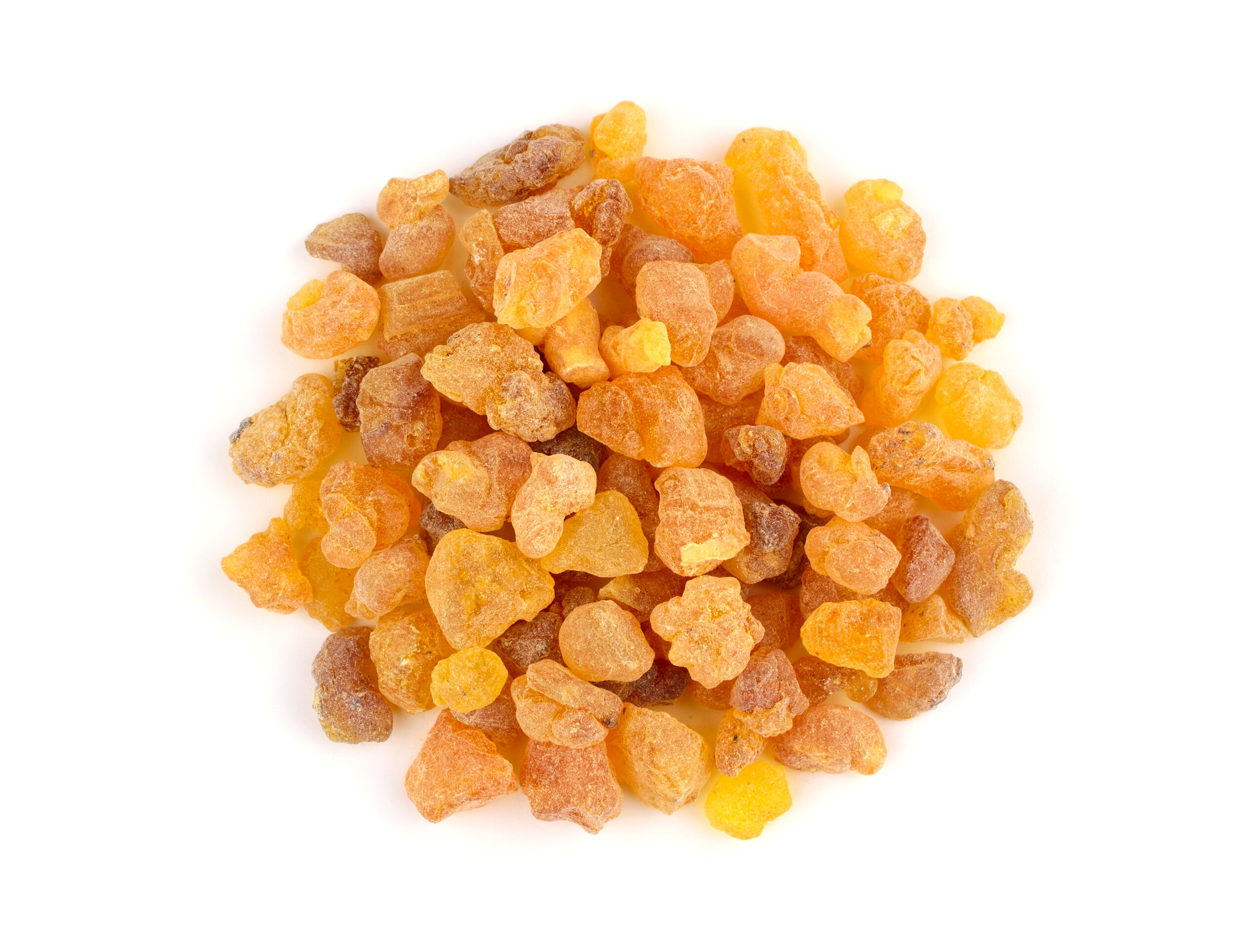Name and origin
Boswellia sacra or Boswellia carterii (Frankincense), also called Olibanum
Boswellia carterii - Frankincense
Frankincense is mentioned in several places within the Old and New Testaments of the Bible. Many of the references to incense are believed to be references to Frankincense resin.
Family
Burseraceae
Part used for essential oil
Gum resin from the Boswellia sacra tree, usually hydro distilled, although usually it is stated to be steam distilled
History
Frankincense has been used and valued since ancient times. Its long history of use dates back to 5000 years in Egypt used in some rituals, as incense, in cosmetics, for medicinal purposes and also in embalming. As an incense it was also used throughout India, China and even by the Romans at some.
In Christianity, gold, frankincense and myrrh were the gifts given to the baby Jesus by the three wise men.
Nowadays, it is widely used for spiritual applications and in cosmetics and perfumery for its luxurious scent.
Other
From a sustainability and conservation point of view it is now considered to be a near threatened species (according to the IUCN Red List of Threatened Species).
Frankincense resin
Use of essential oil
Emotional: stress, nervous tension, anxiety, insomnia, depression, restlessness, nervous exhaustion
Skin: grazes, cuts, dry and oily skin, mature skin, fungal infections, scars, acne
Respiratory: sinusitis, asthma, colds, influenza, bronchitis, coughs, shortness of breath
Digestive: IBS
Muscular/Skeletal: arthritis, rheumatism, aches and pains, headaches, migraine, muscle spasms, strains, sprains
Genito-urinary: cystitis
Therapeutic properties
antibacterial
antidepressant
antifungal
anti-infectious
anti-inflammatory
antiseptic
astringent
carminative
cicatrisant
diuretic
euphoric
expectorant
mucolytic
sedative
tonic

